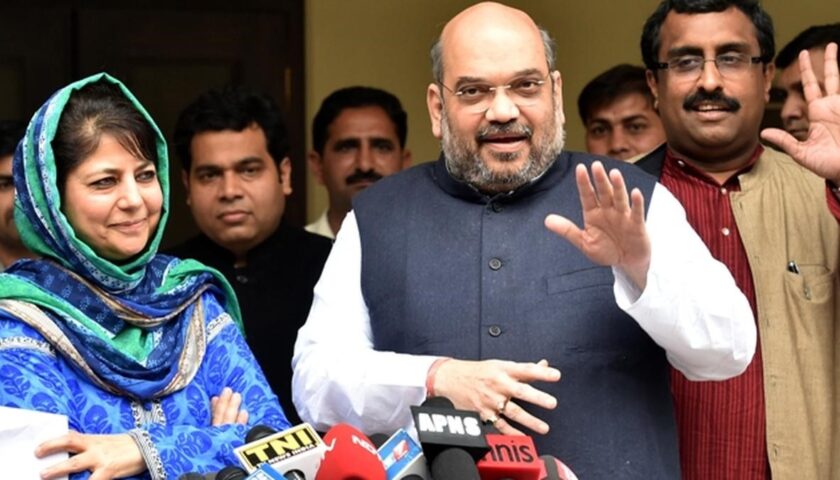Jammu & Kashmir Power Crisis Deepens Amid Heatwave, Baglihar Output Drops
By: Javid Amin | Srinagar | 20 June 2025
A Heatwave with No Switch
As Kashmir sizzles under relentless summer temperatures, residents now face a dual burden: the scorching heat, and a growing power crisis that threatens to derail daily life, disrupt businesses, and endanger health and livelihoods. The electricity supply across Jammu & Kashmir has failed to keep pace with surging demand, pushing households and institutions into prolonged unscheduled outages.
While the Baglihar Hydroelectric Project and other dams have long powered J&K’s grid, their efficiency is now under stress—exposing structural vulnerabilities in the UT’s energy planning.
Demand vs. Supply Breakdown: Numbers Behind the Outrage
Let’s break down the growing demand-supply mismatch:
| Region | Power Demand (MW) | Current Supply (MW) |
|---|---|---|
| Jammu Division | ~1,600 | ~1,400 |
| Kashmir Division | ~1,350–1,400 | ~1,400 |
| Total J&K | 3,000+ MW | ~2,800 MW |
| Deficit | — | 200–250 MW |
What’s Causing the Shortfall? Climate + Capacity Gaps
At the heart of this crisis lies a painful irony: Jammu & Kashmir produces power through hydroelectricity, but its rivers are running dry.
Baglihar Dam Underperforms
-
Normally generates: 900 MW
-
Current output: 750 MW
-
Reason: Low reservoir levels due to 26% rainfall deficit
-
Only 5 out of 6 turbines are operational
Additional Contributing Factors:
-
Delayed infrastructure upgrades in Kashmir’s transmission systems
-
Old transformers and outdated feeders in rural areas
-
Absence of solar and wind alternatives
-
Dependence on interstate power purchases, which are costlier and uncertain during national demand peaks
What It Means for Residents: Heat, Humidity & Helplessness
For ordinary citizens across Jammu and Kashmir, this crisis translates into hours without fans, lights, or refrigeration—in the middle of a harsh summer.
Residential Pain Points:
-
Sudden power cuts lasting 2–4 hours, even in urban areas
-
Inability to run coolers, air conditioners, or even charge phones in some rural belts
-
Students forced to study by candlelight or delay exam prep
-
Medical devices and cold-chain storage in small clinics disrupted
Economic Impact:
-
Small businesses, bakeries, and IT centers report loss of revenue
-
Apple cold storage units in Shopian and Sopore fear spoilage
-
Irrigation pumps in rural Budgam, Kupwara, and Samba sit idle as crops wilt
What Needs to Be Done: Time for a Power Transition
This crisis is not just a weather issue, it’s a policy and planning gap exposed by heat. Experts and energy analysts are calling for a three-pronged action plan:
Maximize Hydropower Efficiency
-
Upgrade turbine infrastructure at Baglihar, Uri, and Dulhasti
-
Monitor real-time water levels with automated forecasting systems
-
Deploy diversion canals and inflow conservation to maintain dam output
Expand Renewable Energy Base
-
Fast-track solar parks in Jammu plains and Ladakh plateaus
-
Offer rooftop solar incentives for schools, hospitals, and homes
-
Explore wind energy pilots in high-altitude ridges
Infrastructure Modernization
-
Replace aging transformers and expand smart meter networks
-
Invest in grid-scale battery storage for load balancing
-
Train energy audit teams in districts to monitor peak-hour usage
Smart Saving Tips for Households
Until supply stabilizes, here are 5 practical ways families can reduce their load and stay cool:
-
Use fans wisely: A fan in a cross-ventilated room can cool better than an overworked cooler.
-
Charge devices during off-peak hours (late night or early morning).
-
Unplug unused appliances—they still draw “phantom” power.
-
Cook during early morning or late evening to avoid midday power strain.
-
Install reflective curtains or use window films to reduce indoor heat buildup.
Would you like a downloadable Power Crisis Survival Guide for Kashmir households?
What Residents Are Saying
“In Kupwara, we’ve had three outages today. The fan runs for 30 minutes and goes off again. My child had a fever and we had to rush to a neighbor’s house,”
— Nusrat Jan, Homemaker
“Our coolers are deadweight now. We run the inverter for an hour, then it’s black again. When will we see solar roofs?”
— Firdous Ahmad, Shopkeeper, Anantnag
“Every summer, we go through this. We generate electricity but remain in the dark,”
— Reyaz Ahmad, Power Engineering Student, Srinagar
By the Numbers: J&K’s Power Ecosystem
| Metric | Figure |
|---|---|
| Total Installed Capacity | ~3,400 MW |
| Hydropower Share | ~1,200 MW |
| Actual Output (June 2025) | ~850–900 MW |
| Imported Power | ~1,800 MW (from northern grid) |
| Households Affected | 1.8 million+ |
Policy Recommendations for J&K Government
-
Declare Power Emergency Zones where outages exceed 6 hours/day
-
Launch Energy Efficiency Awareness Drives through schools and panchayats
-
Create a District-Level Renewable Energy Taskforce (DLRET)
-
Offer subsidized solar kits for small homes and businesses
-
Collaborate with private sector for grid diversification and IoT monitoring
Bottom-Line: Heat Is the Symptom—Infrastructure Is the Disease
Jammu & Kashmir’s ongoing electricity deficit isn’t a seasonal hiccup—it’s a systemic alarm bell. With climate change making summers hotter and rainfall erratic, we need resilient, sustainable energy systems that don’t buckle under pressure.
The UT must act now, not just to avoid future summers of suffering, but to empower its people, economy, and environment with smarter, cleaner energy.




